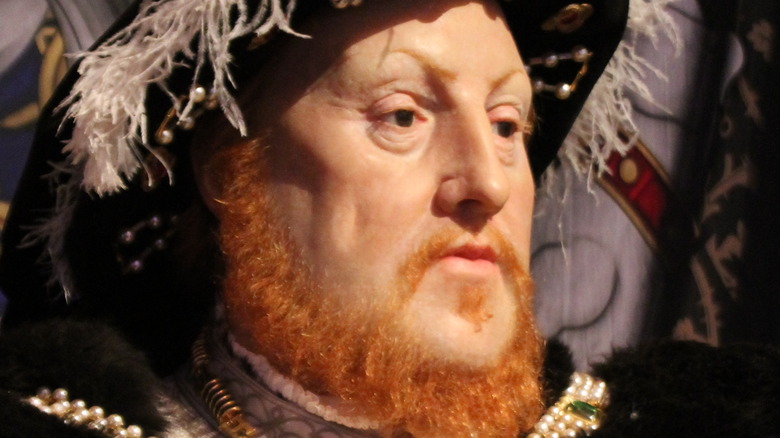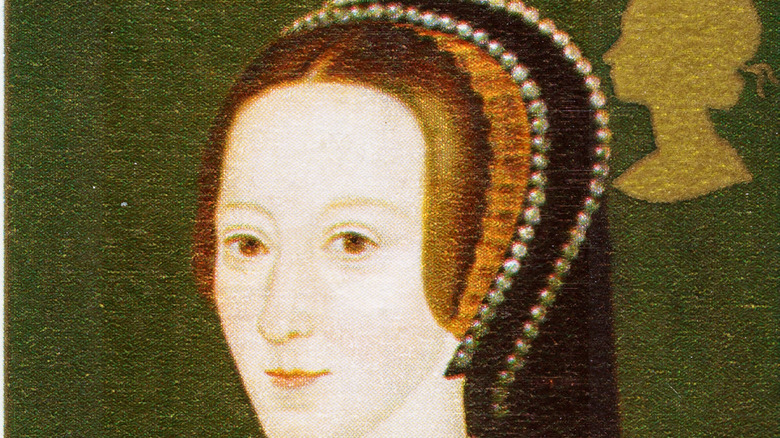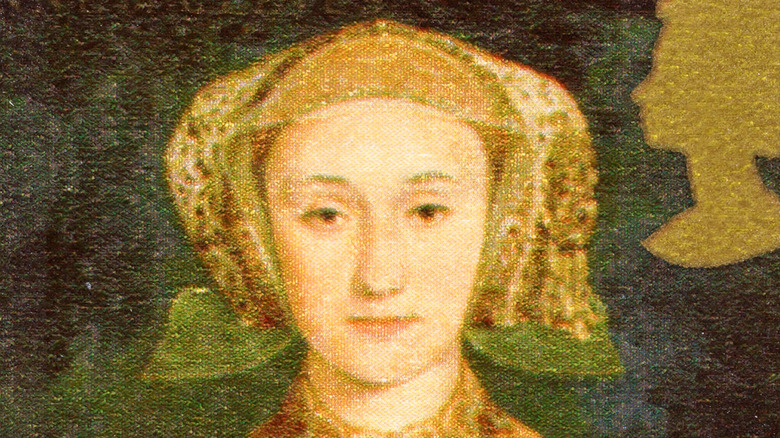How Henry VIII Was Even More Evil Than You Think
England's notorious King Henry VIII is known for a lot of things. He ruled the country from 1509 to 1547, and in those 36 years, he changed England forever. His rule is mostly noted for his multiple marriages that often ended in a divorce or beheading (via History). In fact, one of his divorces even led to the English Reformation — the country's historic departure from the Roman Catholic Church, per World History. King Henry VIII was also responsible for creating the Church of England, and he transformed the Parliament into what it is today. But while he was a very popular King at some point, he lost a lot of fervor from his fellow compatriots quite early into his reign, says Brittanica.
As it turned out, the once so-called savior of England ended up being one of the worst memorable Kings, mostly known for his thirst for power and murderous rampages. So how did a once accepted ruler become so disliked? Of course, the beheadings had something to do with it, but Henry VIII was much more evil than most people think, and there are several reasons why.
The wife killing
King Henry VIII can't be discussed without any mention of his many marriages and wives, and how he managed to somehow execute not one but two of his spouses. Having been married six times, it was his desire to divorce his first wife that led to the major religious and cultural shift in England. But in a surprising plot twist, the second wife that he did all of that reforming for, Anne Boleyn (pictured above), was the first he'd also have killed.
The king desperately wanted a son so he could have a male heir. His first wife Catherine of Aragon had given birth to a son, but the child did not live. The only living child they had was Mary I. After seeking out Anne in hopes she would give him a son, she too failed to do so. In response, Henry VIII plotted to have her removed. Unlike with his first wife, where he dealt with a divorce procedure, he decided to quicken the process by ordering her execution. The ordeal was an already wicked thing to want, and to make matters even more unsettling, the charges he had her executed for were fraudulent. Anne was accused of treason, adultery, and incest, among other things. But the king's real gripe with Anne was her not giving birth to a male child, says Smithsonian.
Another evil factor in Anne's execution in 1536 is the fact that Henry left his daughter, future Elizabeth I, motherless. As reported by History, she would also have to grow up learning that her father had her mother killed.
Treatment of his wives
Anne Boleyn wasn't the only wife of Henry VIII that would be executed. His fifth wife Catherine Howard also met the same fate, and the charges against her were apparently substantiated. The revelation of Catherine's past relations with other men sparked the passing of a new law deeming unchaste women unfit to marry kings, which meant that she needed to be beheaded. And in 1542, she was executed at Henry VIII's behest, per Britannica.
When Henry VIII no longer wanted to be in a marriage with a wife of his, he quickly found a solution. Yet though his resolutions for marriage woes are well-known, the treatment of his wives is not often thought of. Back then, there was no term for his behavior, but today he'd be labeled a domestic abuser and a narcissist. Ultimately, the king's quest for a son may have been the main source of his madness, and his wives suffered the consequences. What's all the more sickening is that his first two wives tried and did before suffering miscarriages, having stillborn babies, or birthing children that didn't live.
If you or someone you know is dealing with domestic abuse, you can call the National Domestic Violence Hotline at 1−800−799−7233. You can also find more information, resources, and support at their website.
The lasting damage of Henry VIII's mistreatment
It didn't matter that Henry VIII's wives physically and emotionally suffered to have children for him — if they didn't bear him a baby boy, they faced the ultimate price. Finally, Henry VIII finally got his first and only legitimate son with his third wife, Jane Seymour, but she died in childbirth. If she had lived, perhaps the nursery rhyme he inspired — "divorced, beheaded, died; divorced, beheaded survived" — would've been different.
But Jane's death led to his eventual marriage to his fourth wife, Anne of Cleves (pictured above), and he didn't exactly like her or the way she looked. Lucky for her, he didn't have her killed, although he almost didn't marry her because of her looks. He ended up divorcing Anne, but unlike his divorce from Catherine of Aragon, she actually financially benefited from the separation. Conversely, Catherine was sent away, humiliated, embarrassed, and was even banished. As for Anne, she was always known as the ugly wife, and it is often how history recalls her, per Historic Royal Palaces.
Other executions Henry VIII ordered
It's no wonder Henry VIII became unpopular. He wasn't considered a mad king for no reason, and he ordered more than just the executions of his wives. Other people, including some of his close advisors, also died at his behest, History reports. Henry VIII had his closest advisor Thomas Cromwell — a man who also helped him depart from the Catholic Church — executed for causing him to get married to his "ugly" wife Anne of Cleves. It is said that the king never got over the incident and the shame it apparently brought to him and had Cromwell charged with treason and murdered.
Along with Anne Boleyn's execution, her brother and sister-in-law, George and Jane, were also killed by Henry VIII. And when Catherine Howard was executed, Henry VIII had the two men she was accused of having past relations with murdered. In fact, there was a point during his reign where Henry VIII would execute anyone he believed was committing treason, witchcraft, or any hearsay. He inspired nothing but terror in people, and more than a dozen were executed when he ruled. Oftentimes, their so-called crimes were unfounded.




